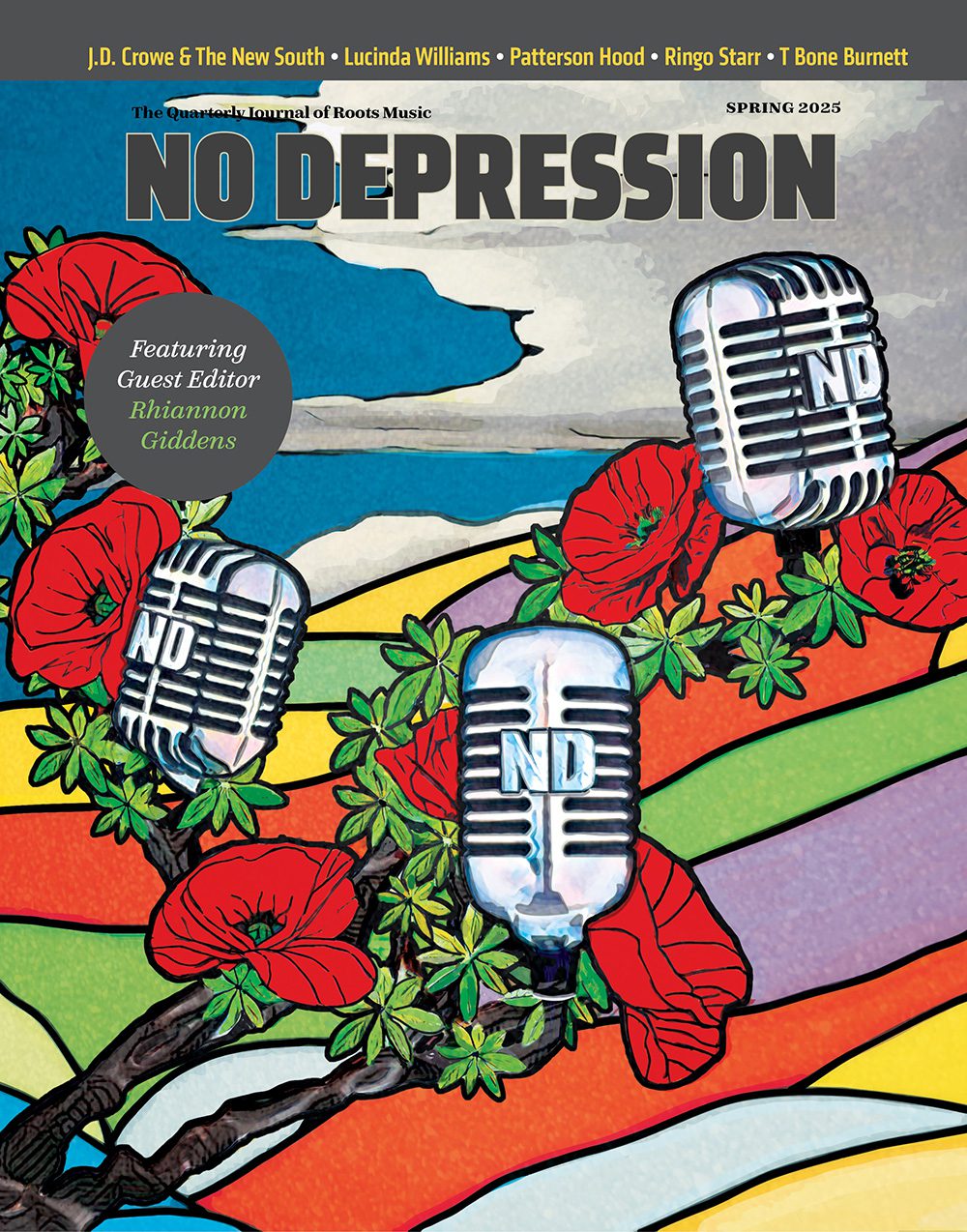Rosalie Sorrels – Singing through the rain
The politics were also artistic. Rosalie came of age during a time when the concept of “folk music” was being challenged by a generation whose aesthetic and philosophical confrontations with some of the old guard mirrored what was going on between the Beats and their Modernist predecessors in literature and poetry. In her interview with Sing Out!, Rosalie described how she had once conformed to the old school views:
“I had accepted the idea that you should keep yourself out of the performance when you sang folk songs: ‘The song — not the singer.’ But at the [1966] Newport Festival…it became clear to me that you take it all in, turn it over and over until you find your own voice, and take your place in the chain. The music does not need to be protected.”
Not a radical notion by today’s standards, but it was considered apostasy by some guardians of tradition. Rosalie chuckles as she remembers the lengths some singers had to go to in order even to get the chance to perform original material. “Jean Ritchie wrote a whole lot of great songs about where she came from [in rural Kentucky], marvelous songs, and when she put them out she said they were written by an uncle of hers! Because she got so much shit for writing her own songs. I take it now, when I look back on it, as a control-freak thing. Purists are usually people who haven’t touched life very much.”
Nevertheless, by her own admission Rosalie was initially reluctant to share her own voice with the world. It was only after established artists such as jazz pianist/composer David Frischberg and future New Age music maven Paul Winter encouraged her early songwriting attempts that she decided to risk it. As she became more confident, though, she began to pour herself into her music and storytelling with an open-nerved honesty that dismayed even some of her own colleagues.
She was similarly transgressive with some of her music. Her 1972 disc Whatever Happened to The Girl That Was? (Sire/Paramount) included, among others, Dave Holland on bass, Eric Kaz on keyboards and harmonica, and former Canned Heat fretman Harvey Brooks on both electric bass and guitarron. Producer Michael Cuscuna gave the disc a sophisticated, pop-tinged sheen that appalled some tradition-minded critics.
Then there was the challenge of re-creating some of this music onstage; even today, her stylistic melanges can cause problems if her accompanists aren’t as eclectic and attentive in their listening as she is.
“I had been listening to jazz every day,” she says. “I listened to Billie Holiday all the time. I sing behind the beat or in front of it a lot, and I know what I’m doing, but I would sit down and do it with other guitar players besides Mitch or Bruce Carver, and I’d have to just put it all in 3/4 time before they could play it. A lot of people don’t hear it, and they just sort of tramp all over it.”
Meanwhile, the good times Rosalie and her fellow travelers shared were often at least as unruly as their music. Folkies have never exactly been prim in their lifestyle — regardless of the public image some have tried to maintain — and in the ’60s and ’70s, many embraced glorious excess with the same no-holds-barred passion that they challenged the boundaries of their art.
A New York tavern called the Lion’s Head “became my office; they even kept my mail for me,” she says. “When we sang — Dave Van Ronk, Pat Sky, Tom Paxton, the Clancy Brothers, Joe Heaney — we’d sit around this big round table. Like a ceilidh, where you all sing for each other, and you wouldn’t dream of singing anything except the very best you can sing because you have so much respect for everybody else who’s there, and you have to drink, and you have to not fall down. Sometimes it’d be 9 o’clock in the morning before we’d go out.
“In San Francisco it was Specs, a similar kind of thing — writers, street people, poets. That’s where I met Jack Micheline. I did a concert in Eugene [Oregon], and Ken Kesey attended that concert, and he stood up in the back of the room and said, ‘That woman is the genuine article!’ We became close friends, spent a lot of time together and talked a lot.”
Some of the friendships she nurtured during these years dated back to before she’d left Idaho. She had met Hunter S. Thompson at a gig she was playing at the Leadville Espresso House in Sun Valley. “I sang [Bruce Philips’] ‘I Think Of You’, and Hunter asked me to sing it again: ‘You see that stone bottle of Irish whiskey up there? If you sing that song again, I’ll make him open it.’ So I sang it six times. I got really drunk, and after that I think I smoked some marijuana, and then I drank some hot buttered rum.
“Next thing I knew, I woke up on the floor of the bedroom where I was staying. I felt like someone had nailed my head to the floor with a railroad spike! I crawled over to the bathtub, a huge bathtub with natural hot water, hotter than boiling. I persuaded my children to go outside and get snow, armloads, and put it in there until it got cool enough. I probably should have had a stroke and died right there! I finally got out and I crawled into the kitchen and made breakfast for the children, and I crawled back into the living room and laid on the couch. Hunter and my friend Millie Wiggins, who had brought me there, came in. They had made a big paper, like a diploma. It was the ‘Wretched Excesses Of The Year Award,’ and they gave it to me.
“I became fast friends with Hunter immediately. I loved his wife, Sandy; I’m still friends with her. I know he loved her. He had an extremely committed family persona; he was a seriously good father. After I wasn’t married anymore, he was really impressed with the way I dealt with my children; he was really interested in that, and honored it. I felt the same way about Kesey — whatever persona he presented to everybody else, he was nothing like that when he was at home.
“I was just lucky, because I lived in the right place at the right time. I don’t remember a time when I didn’t see something fantastic going on, nearly every day of my life. It was just an amazing time, between the middle of the ’50s and the middle of the ’70s. Just astonishing. All of it.”




